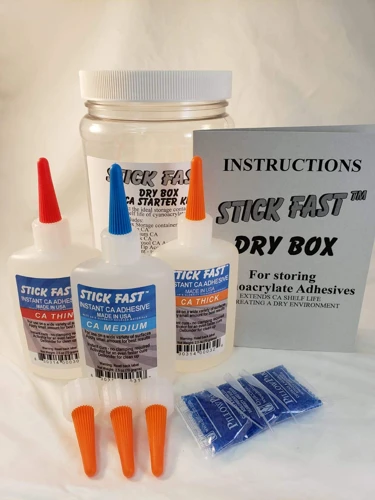Silicone adhesives are revered for their remarkable versatility and durability, especially in projects that demand a bond resilient to temperature fluctuations, moisture, and chemical exposure. From everyday household repairs to industrial applications, the ability to glue silicon surfaces is an invaluable skill. Whether you’re sealing a kitchen sink or crafting a waterproof gadget, the applications of silicone adhesives seem almost limitless, marking their importance in both the DIY and professional spheres.
Choosing the Best Silicon Adhesives
Understanding Different Types of Silicone Adhesives
When it comes to bonding silicon, not all adhesives are created equal. Factors such as temperature resistance, elasticity, and bonding strength play a crucial role in determining the suitability of a silicone adhesive for a particular task. Some adhesives excel in outdoor conditions, while others are designed for sensitive electronic applications. Grasping the distinct properties of each type is the first step to ensuring a successful bond.
Comparing the Best Silicon Adhesives for DIY Projects
To embark on DIY silicon gluing endeavors, identifying the best silicon adhesives is key. Top-rated adhesives boast a balance of strength, flexibility, and ease of use. For those undertaking DIY projects, adhesives that are user-friendly and provide clear instructions can make all the difference in achieving a professional finish.
Silicone Bonding Solutions and Techniques
Preparation Steps for Bonding Silicon
Even the most potent silicone bonding solutions require proper surface preparation to ensure a strong adhesion. Cleaning the surfaces to remove dust, oils, and contaminants is critical. Additionally, some scenarios may necessitate the use of a primer or adhesion promoter to enhance the bond strength.
How to Use Silicone Glue for Effective Bonding
Understanding how to use silicone glue effectively is essential for any bonding task. The process involves applying the adhesive in a controlled manner, ensuring even distribution, and allowing adequate time for curing. A steady hand and patience are the allies of any successful silicone bonding endeavor.
Step-by-Step Silicone Adhesive Guide
Step 1: Surface Preparation for Silicone Bonding
- Clean the surfaces thoroughly.
- Dry any moisture present.
- Apply primer if necessary.
Step 2: Applying Silicone Adhesive
With the surfaces prepped, the next step in our silicone adhesive guide is the application. Cut the tip of the adhesive applicator to the desired size, puncture the inner seal, and apply the adhesive in a smooth bead, maintaining consistent pressure.
Step 3: Pressing and Curing the Silicone Adhesive
After application, promptly join the surfaces together and apply gentle pressure to spread the adhesive evenly. The curing process, which solidifies the bond, begins as soon as the adhesive is exposed to air. It’s crucial to allow ample time for the adhesive to set without disturbance.
Advanced Silicon Glue Techniques
Techniques for Complex Silicone Bonding Tips
Advanced projects may call for more intricate silicon glue techniques. This can include creating temporary jigs to hold components in place or using specialized tools to apply the adhesive with precision. The goal is to navigate complex geometries and material combinations with finesse.
Tricks for Faster and Stronger Silicone Adhesion
- Choose the right adhesive for the material and conditions.
- Ensure a moisture-free environment during application and curing.
- Follow the manufacturer’s instructions for the best results.
Curing Silicone Adhesive: Best Practices
Understanding the Curing Process
The curing process is the cornerstone of a robust silicone bond. It involves the transformation of the adhesive from a pliable state to a firm, elastic solid. Factors affecting this process include temperature, humidity, and the thickness of the adhesive layer.
Tips for Accelerating the Curing Time
To accelerate the curing time of silicone adhesive, carefully controlling the environment is beneficial. Increased temperature and adequate ventilation can reduce curing time, but it’s important to follow the adhesive’s specifications to avoid compromising the bond’s integrity.
DIY Silicon Gluing Projects
Ideas for Home DIY Silicon Gluing
Home DIY silicon gluing projects can range from sealing bathroom fixtures to crafting custom kitchen utensils. Silicone adhesives are perfect for creating waterproof seals and repairing flexible materials, making them a staple in the toolkit of any home improvement enthusiast.
Customizing Your DIY Projects with Silicone
The flexibility of silicone adhesives allows for significant customization in DIY projects. Whether you’re molding parts for a custom gadget or reinforcing a decorative piece, silicone can be shaped and applied in various ways to suit your creative vision.
Troubleshooting Common Silicone Adhesive Issues
How to Address Incomplete Bonding
Incomplete bonding can be attributed to improper surface preparation or inadequate curing time. To address this, ensure surfaces are clean and dry, and allow the adhesive to cure fully before testing the bond strength.
Solutions for Removing Excess or Unwanted Silicone Adhesive
Removing excess or unwanted silicone adhesive can be challenging. However, specialized solvents can soften the adhesive for easier removal. Mechanical methods, such as scraping or peeling, are also effective when used with care to avoid damage to the underlying surfaces.
If you’re embarking on a DIY project and need to know the ins and outs of adhesive techniques for various materials, you’ve come to the right place. While you’re learning about how to glue silicone, you may also find it helpful to explore our guides on how to glue crystal and how to glue aluminum. Each material requires a specific approach, and our detailed articles are here to ensure your project is a success!
Conclusion: Enhancing Your Gluing Skills
Mastering the art of silicone adhesion is a valuable skill that can enhance both DIY projects and professional tasks. By understanding the intricacies of the various silicone bonding solutions and techniques, and by following the provided silicone adhesive guide, you can ensure strong, durable bonds for all your silicon gluing needs. With the right knowledge and practice, your ability to glue silicon will become an indispensable part of your crafting arsenal.




